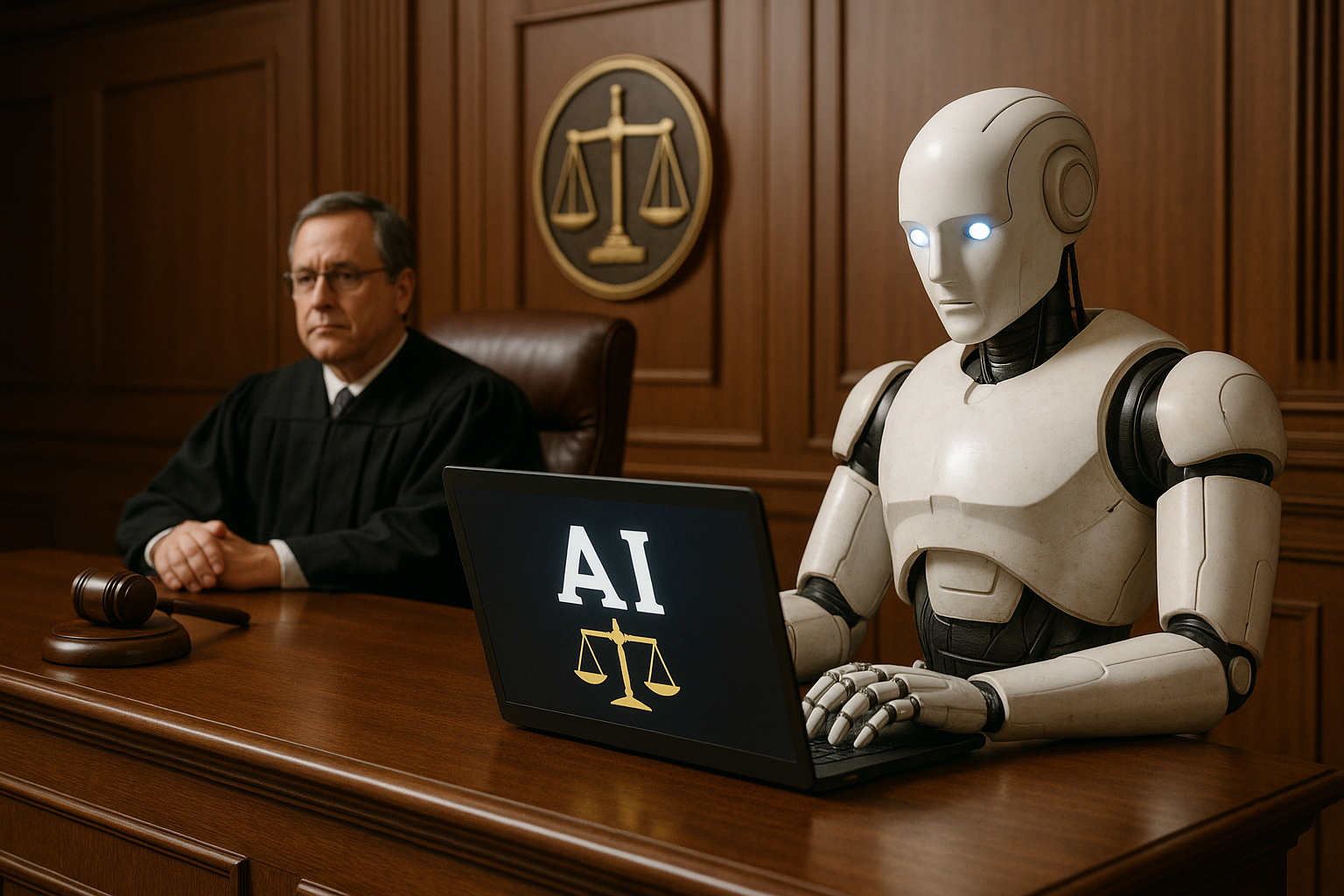Proposal: Implementing AI Judgment Reviews in Parallel with Human Judiciary – A Transitional Path to Fairer Justice

In an era increasingly defined by data-driven decisions, the judiciary remains one of the last major institutions governed almost entirely by human discretion. While the value of human judgment in law cannot be dismissed lightly, the limitations and inconsistencies of that judgment are equally undeniable. Bias, fatigue, emotion, political influence, and socioeconomic disparity affect rulings, often with devastating and irreversible consequences.
This proposal does not advocate for the immediate replacement of human judges with artificial intelligence (AI). Such a move would be premature, politically explosive, and logistically overwhelming. Rather, the proposal recommends that we begin conducting parallel AI judgments for all legal cases—past and present—as a complementary, transparent, and scientifically valuable process. These AI-generated rulings would serve as a counterfactual audit: a reference point for comparison, accountability, and reform. Over time, this initiative could evolve into the foundation of a more equitable, consistent, and data-driven legal system.
I. The Problem: Human Judgment Is Inherently Flawed
Modern justice systems, while noble in principle, are vulnerable to systemic errors. Consider the following problems that plague courts globally:
- Judicial Bias: Countless studies show racial, gender, and socioeconomic biases in sentencing. For example, minority defendants often receive longer sentences than white counterparts for the same crime.
- Inconsistency: Different judges in the same jurisdiction may issue radically different sentences for identical offenses. This undermines the idea of “equal justice under law.”
- Emotional and Political Influence: Judges are human beings. They get tired. They may be influenced by public opinion, media pressure, or political alignment.
- Opaque Reasoning: Legal reasoning is often inaccessible to the public, and judges are rarely held accountable for flawed logic unless a case is appealed.
AI, if trained properly and transparently, offers a chance to counterbalance these flaws—not through dictating outcomes, but by providing a neutral baseline for analysis.
II. The Proposal: Parallel AI Judgment System
We propose that every legal case—from minor civil disputes to major criminal trials—be processed through a parallel AI system that simulates what an impartial, law-bound algorithm would decide based solely on the facts, applicable laws, precedents, and sentencing guidelines.
This system would operate retroactively and prospectively:
- Retroactive Review of Past Cases: Feed past court cases into the AI system to generate hypothetical “AI judgments.” This would help identify patterns of bias, inconsistency, or legal irregularity.
- Simultaneous Judgment for Present Cases: As new cases are adjudicated by human judges, an AI-generated judgment would be produced in parallel. This would not affect the outcome of the case but would be published alongside the human verdict for public and legal scrutiny.
- Future Training and Reform: Over time, we can compare human and AI rulings to identify discrepancies, improve legal education, reform sentencing guidelines, and ultimately train more consistent legal agents—whether human or AI.
III. Why Start With Parallel AI Judgments?
This approach has multiple benefits:
- Low Political Resistance: Because it does not remove human judges, it avoids the explosive political and institutional resistance that would come with full replacement.
- Transparency: Publishing AI rulings alongside human ones allows the public and legal scholars to study systemic problems objectively.
- Correction of Past Wrongs: Reviewing historical cases may identify unjust convictions or rulings that warrant retrial or pardon, especially where bias or outdated laws played a role.
- Public Trust: A system that publicly tests itself, through dual rulings, shows a willingness to evolve and a commitment to fairness.
- Training Ground for the Future: This allows the AI to learn while also teaching humans—eventually, these rulings could serve as the backbone of a new, partially automated justice system.
IV. How the System Works
The AI would not be a black box. It would be built with open-source legal data, transparent algorithms, and explainable reasoning. Its core components would include:
- Statute Parsing Engine: Understands and applies relevant laws.
- Precedent Analyzer: Pulls from a database of prior rulings to identify applicable precedents.
- Fact Pattern Matcher: Aligns factual situations with established legal doctrines.
- Sentencing Simulator: Uses structured data to propose penalties consistent with law and precedent.
- Bias Audit Tool: Compares proposed outcomes with demographic data to flag potential inequality.
All outputs would include a full legal explanation, citations, and confidence scores.
V. Objections & Responses
Objection 1: AI can’t understand nuance.
Response: True, AI lacks human empathy—but this is exactly what allows it to remain impartial. AI is not here to override humans, but to provide a logic-check, especially useful in flagging inconsistencies or statistical outliers. As models improve, their understanding of nuance—especially legal nuance—continues to grow.
Objection 2: This will create confusion.
Response: Initially, there will be tension between AI and human rulings, and that is the point. Tension reveals fault lines. Public dialogue around these discrepancies will foster accountability and eventually improvement.
Objection 3: Judges will feel undermined.
Response: On the contrary, this is a tool to assist and evolve the judiciary—not destroy it. Judges could use AI opinions during deliberation. Moreover, excellent judges will be affirmed by agreement with AI systems.
VI. A Future Vision
Imagine a legal system in which:
- A citizen accused of a crime can request both a human trial and an AI ruling.
- If the two verdicts differ significantly, an appeal is automatically triggered.
- Legal scholars use AI reports to push for legislative reforms based on aggregate injustice.
- Wrongfully imprisoned individuals are identified by AI discrepancy audits and exonerated.
- Political or celebrity influence is rendered irrelevant in court.
This is not science fiction. This is governance by logic, transparency, and principle.
VII. Conclusion
We do not advocate the abolition of human judges, but their evolution through evidence-based reform. Introducing a parallel AI judgment system allows us to test the integrity of our current system without disruption, using logic and historical data to measure fairness.
Justice, if it is to be just, must be consistent, transparent, and accountable. Let us begin building the tools that make it so—not by removing humans from the courtroom, but by allowing another voice to speak: the voice of impartiality, mathematics, and reason.
Let AI serve as our mirror, and eventually, our guide.





